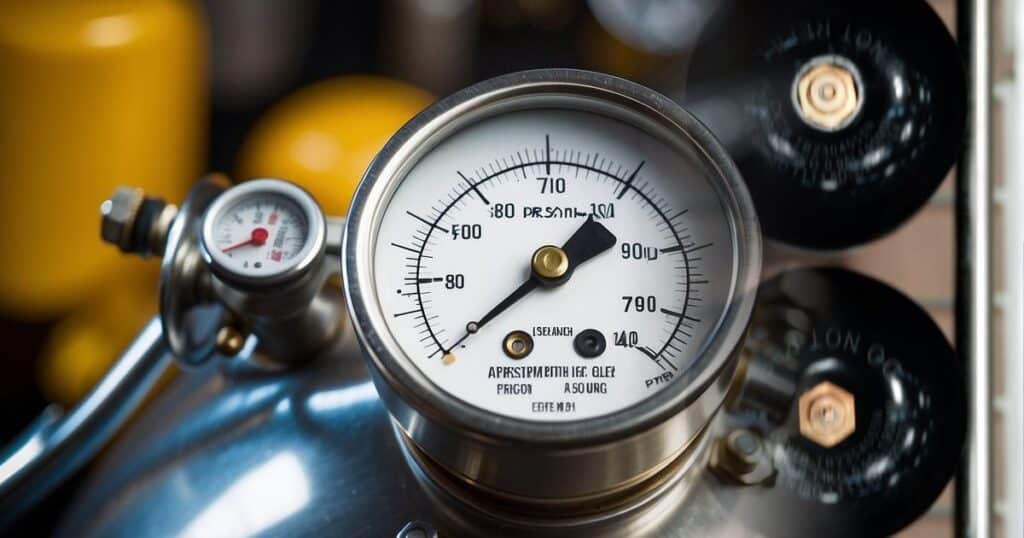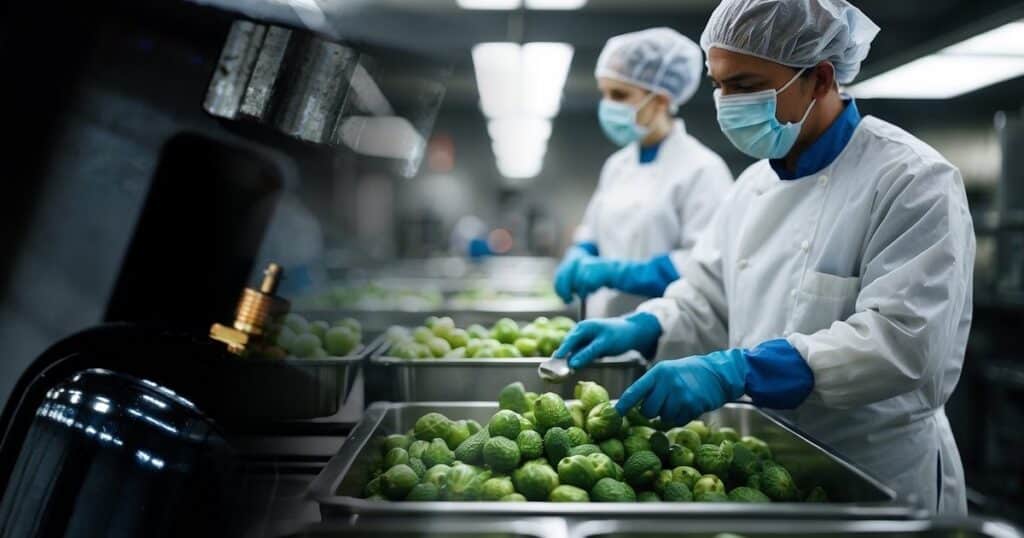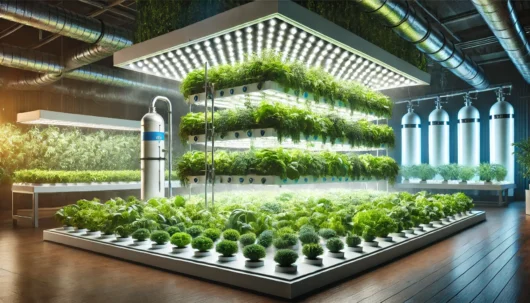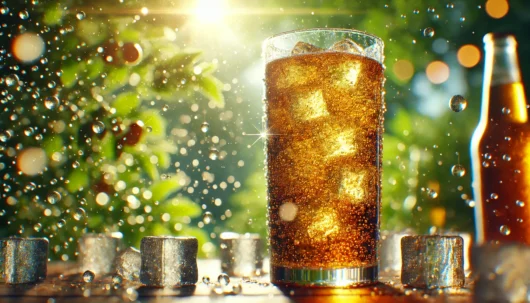Food grade argon is a high-purity gas used primarily in the food and beverage industry to preserve flavor, prevent oxidation, and maintain the quality of products from production to consumption. As an inert gas, argon doesn’t react with food, making it an excellent choice for extending the shelf life of sensitive products without altering their taste or aroma. In particular, it is an essential tool in wine preservation, displacing the oxygen in an opened bottle of wine, thus protecting it from oxidation and spoilage.
One of the advantages of using food grade argon is its effectiveness in preserving quality and ensuring safety standards. This gas is both odorless and colorless, meeting stringent regulatory requirements for food safety. It is mainly stored in high-pressure steel cylinders. It is easily accessible for various applications, including modified atmosphere packaging and blanketing — a process where argon creates a protective layer over consumables to shield them from the deteriorating effects of air exposure.
Key Takeaways
- Food grade argon helps preserve the taste and quality of foods and beverages.
- It protects wine from oxidation post-opening, thus extending its shelf life.
- Argon’s safety and inert nature make it ideal for various applications in the food industry.
Food Grade Argon Basics

Food Grade Argon is a high-purity form of argon gas, essential in various food and beverage preservation processes. It’s an inert gas that prevents oxidation and decay, significantly maintaining your food’s freshness and safety.
Argon Purity:
- Standard industrial grade argon: ≥ 99.998%
- Food grade argon: ≥ 99.996%
Argon, a noble gas, does not react with your food, so the FDA endorses its use under compliance guidelines. This endorsement underscores the importance of argon’s non-reactivity, especially in food safety.
In wine preservation, Food Grade Argon is particularly effective. When you open a bottle of wine, the oxygen from the air can mix with the wine, leading to deterioration. Because of its heavier density, Food Grade Argon can be used to displace oxygen, forming a protective layer above the wine. This guards against spoilage and preserves your wine’s taste, aroma, and quality after opening.
Why choose Food Grade Argon for wine preservation?
- Food safety: Meets strict FDA standards.
- Inert gas properties: Will not affect wine flavor.
- Effectiveness: More efficient than nitrogen in preventing oxidation.
Remember, when selecting gases for food or beverage preservation, always choose one that ensures compliance with food safety standards. Food Grade Argon provides peace of mind with its purity and the inert qualities you require for maintaining the essence of your food products, especially wine.
Applications and Usage in the Food Industry

Remember that your understanding of how Food Grade Argon enhances food preservation, and quality will benefit significantly from recognizing its applications in the food industry, particularly in maintaining product integrity during storage and enhancing beverage flavors.
Preservation and Packaging
Food Grade Argon is crucial in food packing, specifically Modified Atmosphere Packaging (MAP). This technique involves substituting the air inside a package with a protective gas mixture, significantly extending the shelf life of foods. Due to its inert nature, Argon is often combined with other food-grade gases like nitrogen and carbon dioxide to preserve and package various foods that maintain food quality without affecting taste or texture.
- Applications:
- Inerting of snack packaging
- Shelf life extension for fresh produce and meats
Beverage Quality and Enhancement
Argon’s role in the beverage industry is exemplified by its use in Wine Preservation. After opening a bottle of wine, protecting it from oxygen exposure can alter flavor is essential. Food Grade Argon, denser than air, settles over the wine, forming a protective layer that prevents oxidation—thus maintaining the wine’s quality for extended periods.
- Benefits:
- Maintains the original taste and bouquet of wine and beer
- It can be used in soda and other beverage-chilling processes
Specialized Equipment and Supply Considerations
When utilizing argon in the food industry, it’s essential to have appropriate equipment and supply considerations. This includes compressed high-pressure systems or liquid argon cylinders, complete with CGA connections for secure attachment. For safety and efficiency, you should ensure your setup complies with SDS guidelines and use welding equipment and safety products designed for food-grade gases. Providers often offer flexible delivery modes, including on-site gas generation, to accommodate bulk orders and more minor needs, serving as a single-source supplier for your argon supply.
- Key Considerations:
- Safety and regulatory compliance
- Secure connections for high-pressure supply
- Reliable, consistent access through various delivery modes
Frequently Asked Questions
When exploring the use of Food Grade Argon, particularly in applications like Wine Preservation, it’s essential to understand its benefits and distinctions from other gases. Here are answers to some common questions.
What are the typical uses of food grade argon in the food industry?
Food Grade Argon is primarily used to displace oxygen in packaging, extending perishable goods’ shelf life. It’s heavily utilized in packaging snacks and pharmaceuticals and is integral in preserving wine by protecting it from oxidation after opening.
How does food grade argon enhance food preservation?
By reducing the oxygen content around food, Food Grade Argon prevents oxidation, which is a primary cause of spoilage. This inert gas creates a barrier that maintains the product’s flavor, aroma, and texture over an extended period.
What are the differences between food grade and industrial-grade argon?
Food Grade Argon meets stringent purity standards and is certified for consumption, whereas industrial grade may contain impurities unsuitable for food and beverage uses. The production process for food grade argon entails careful monitoring to ensure the absence of contaminants.
Can food grade argon be used in the beverage industry, and if so, how?
Yes, in the beverage industry, Food Grade Argon is used for Wine Preservation and in the packaging of beer and carbonated drinks to prevent oxidation and maintain quality. It’s particularly valued for preserving the structure and taste of wine post-opening by avoiding contact with oxygen.
Where can I find suppliers of food grade argon cylinders?
Suppliers can be found through gas companies specializing in food and beverage applications. Providers like Linde Gas and Airgas offer Food Grade Argon in various cylinder sizes suitable for different needs.
What should I consider when comparing prices of food grade argon?
Consider the purity level, cylinder size, and delivery costs when comparing prices. It’s essential to balance the cost with the supplier’s reputation and the reliability of their gas quality, which directly influences your product integrity.


